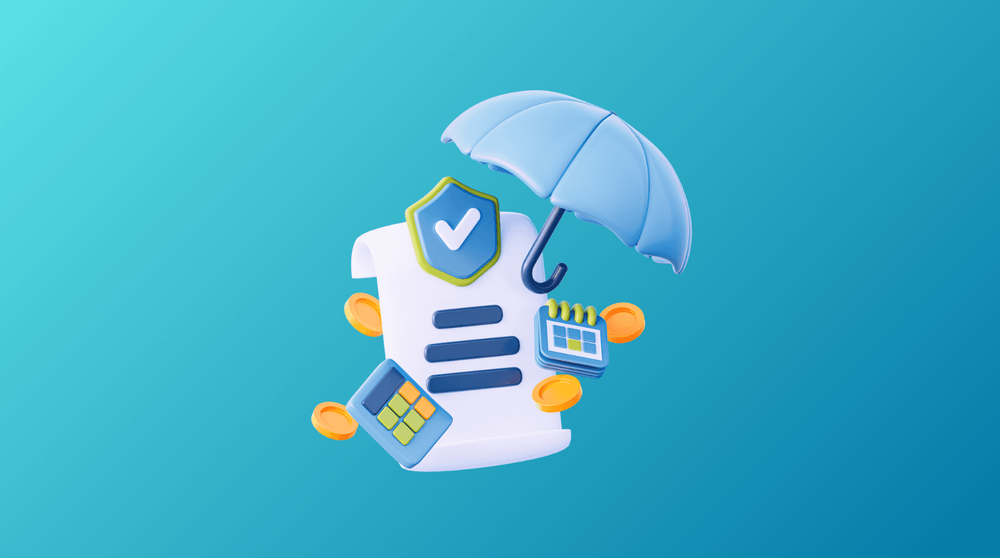Remote work has become a cornerstone of modern business, enabling teams and individuals to collaborate effectively regardless of physical location.
Whether you’re a freelancer, part of a small team, or a member of a large organization, having the best remote working tools and work tools is essential for maintaining productivity, communication, and workflow.
In this article, we will explore 20 remote work software tools that cater to various needs—from branding, project management and communication to file sharing and time tracking. These tools will help you navigate the challenges of remote work and ensure that your virtual workspace is as efficient and cohesive as a traditional office.
Project Management Tools for Remote Teams
Asana
Asana’s a strong project management tool, especially for beginners. Its key features include different project views (lists, boards, calendars), task dependencies, and integrations with other tools, which enhance its effectiveness and value. The free plan is generous, offering unlimited tasks, storage, and team collaboration.
However, there are drawbacks. Asana can get pricey for larger teams, especially with the jump from free to paid plans. Some features, like advanced reporting, are locked behind paywalls. Also, the mobile app has limitations compared to the desktop version.
Overall, Asana’s a great option for individuals and small teams. For larger teams with complex needs, consider if the features justify the cost.
Trello
Trello shines with its simplicity and visual Kanban boards. Its key features include customizable workflows, task automation, and seamless integration with other tools, which contribute to its effectiveness and value. It’s fantastic for beginners and fans of drag-and-drop organization. The free plan is robust, allowing unlimited users, boards, and cards – perfect for personal use or small teams.
However, Trello can get bogged down with complex projects. Features like time tracking and in-depth reporting are absent, requiring integrations or upgrades. Additionally, while Trello offers mobile apps, they can feel limited compared to the desktop experience.
Trello excels at straightforward project and task management tool too. If you value ease of use and a free plan with ample features, Trello is a winner.
Jira
Jira's a powerhouse for project management, particularly with agile methodologies. It offers robust features for complex projects, like customizable workflows and detailed reporting. The free plan is a plus for small teams, but its true strength lies in integrations with other Atlassian products.
For beginners, Jira has a steeper learning curve than Trello or Asana. The interface can be overwhelming at first, and its power comes at a cost – its paid plans can be expensive, especially for larger teams.
Overall, Jira is ideal for established teams comfortable with a learning curve. For its power and scalability, it's a great choice for complex projects. If you prioritize affordability or a simpler interface, consider Trello or Asana.
Basecamp
Basecamp thrives on simplicity, making it ideal for small teams or those new to using project management software. Its all-in-one approach combines tasks, discussions, and files in one place. The free "Basecamp Personal" tier is a perk, offering unlimited users for basic project needs.
However, Basecamp prioritizes ease of use over advanced features. Complex projects might feel cramped with its limited task views and lack of time tracking. The free plan has storage limitations, and paid plans can be expensive for features offered elsewhere.
If clear communication and basic project management are key, Basecamp is a solid choice.
Design Tools for Remote Teams
Pixcap
Pixcap is a must-have 3D design asset resource for UX and graphic designers looking for customizable 3D icons, illustrations, characters, and mockups for websites, mobile apps, social media graphics, or branding visuals.
Pixcap is a customization powerhouse, enabling you to edit textures, colors, lighting, even animations to perfectly match your brand. With its easy drag-and-drop interface, everyone can seamlessly use Pixcap for their daily design needs.

Figma
Figma's a win for collaboration and web-based design. It's easy to learn, lets you jump in and design quickly, and stores everything in the cloud.
Sharing prototypes and getting feedback is smooth, with real-time collaboration a huge advantage. Those working on the code can easily access design specs.
However, it can slow down with complex projects and multiple viewers. While there's a free tier, some features are locked behind a paywall. Overall, Figma's a powerful and user-friendly tool for design teams, but keep its limitations in mind.
FigJam
FigJam is Figma's digital whiteboard that allows for real-time brainstorming and collaboration. It's ideal for remote teams to bounce ideas off each other, track progress, and organize thoughts visually.
With its sticky notes, shape library, and collaborative commenting feature, FigJam provides a virtual space for meetings and workshops. Plus, it integrates seamlessly with Figma projects for easy transfer of ideas from brainstorming to design implementation.
Remote Team Communication Tools
Slack
Slack’s an instant messaging platform that has taken the business world by storm. Its key features include chatrooms, or “channels,” which provide a centralized location for conversations and file sharing. Seamless integrations with third-party apps like Google Drive and Trello make it a popular choice.
For remote teams, Slack offers real-time communication and other collaboration tools without overwhelming email inboxes. However, its free plan caps message history and lacks some advanced features found in paid plans.
Overall, Slack is a top choice for quick communication and team collaboration.
Zoom
Zoom is a video conferencing tool that has become essential for remote teams. Its easy-to-use interface allows for screen sharing, video calls, virtual backgrounds, and large group meetings. The free plan's 40-minute meeting limit can be a drawback for longer discussions.
With the rise of remote work, Zoom has become a key tool for team communication. Its reliability and user-friendly features make it a top choice for virtual meetings.
Google Meet
Google Meet is a video conferencing tool that integrates seamlessly with Google's suite of productivity applications. It offers similar features to Zoom, such as screen sharing and virtual backgrounds, but also allows for real-time collaboration on documents within the meeting.
As part of Google Workspace (formerly G Suite), Google Meet is already included in many businesses' subscription plans. For teams heavily reliant on Google's tools, it may be a more cost-effective option than Zoom.
Loom
Loom is a video recording tool that allows for quick and easy screen capture and sharing. It a great tool that's particularly useful for remote teams as it eliminates the need for lengthy written instructions or explanations.
With its free trial plan, Loom offers unlimited recordings with basic editing features. The paid plans include advanced options such as call-to-action buttons and custom branding. Many teams use Loom to create training videos, product demos, or project updates.
File Sharing and Storage for Remote Teams
Google Drive
Google Drive is a cloud-based file storage and sharing service that allows teams to access, edit, and collaborate on files from any device. With its built-in Google Docs, Sheets, and Slides applications, it's a convenient option for real-time collaboration on documents.
For remote workers and teams using Google Workspace, Google Drive makes it easy to share files within the organization and control access levels. The paid plans also offer ample storage space for large files.
Dropbox
Dropbox is another popular cloud-based file storage and sharing service. It offers similar features to Google Drive but also integrates with Microsoft Office applications for easier collaboration with non-Google users.
Dropbox also offers advanced security features and the ability to set expiration dates for shared files. With its mobile app, remote teams can access and edit files on-the-go. However, Dropbox's paid plans can be more expensive compared to Google Drive.
Time Management and Productivity Tools
Hubstaff
Hubstaff excels at time tracking and managing remote teams. The user-friendly interface makes it easy to track hours and categorize tasks. Managers gain valuable insights into project progress and employee productivity. Features like automated payroll and GPS tracking (optional) streamline workflows.
However, Hubstaff's real-time monitoring and optional GPS features might feel intrusive to some remote employees. The pricing can also be a barrier for smaller teams or freelancers. Overall, Hubstaff is a powerful tool for boosting remote team productivity, but consider its potential privacy implications and cost.
Harvest
Harvest is a solid time tracking app with a clean interface. It's a breeze to use for logging hours and categorizing projects. Freelancers and small teams love its invoicing features, making it easy to send bills based on tracked time. The mobile app lets you track on the go, and integrations with popular tools boost efficiency.
However, some might find Harvest's features basic compared to competitors. The mobile app can be glitchy at times, and reports, while helpful, could be more customizable. While affordable, Harvest might lack the bells and whistles some power users crave.
Time Doctor
Time Doctor combines time tracking with productivity insights to help individuals and teams manage their time better. Its distraction management feature blocks access to distracting websites, nudges users when they get off task, and provides weekly reports on productivity.
However, Time Doctor's features are too intrusive for some users. Plus, the pricing plans are geared towards larger teams, making it less cost-effective for freelancers or small businesses.
RescueTime
RescueTime is a popular productivity app that tracks your time and provides detailed reports on how you spend it. It also offers goal-setting features and the ability to block distracting websites.
RescueTime lacks manual time tracking, so it may not be the best fit for those who need to track offline work or meetings. The pricing can also get pricey for teams with more than three members.
Security and Privacy for Remote Teams
NordVPN
NordVPN excels in securing your remote work connection. Its strong encryption and leak protection keep your company's data safe, even on public Wi-Fi. The vast server network lets you access internal resources from anywhere.
While reliable, NordVPN can experience occasional connection drops, potentially disrupting workflow. Additionally, the pricing might be steeper compared to some competitors offering similar features.
Okta
Okta is a cloud-based identity and access management platform that provides secure remote access to company resources from mobile devices. Its multi-factor authentication and single sign-on features make it easy for employees to securely log in to their work accounts from anywhere.
Okta's pricing may be more suitable for larger businesses and enterprises. Some users have also reported a steep learning curve when setting up the platform.
LastPass
LastPass is a popular password management tool that helps remote teams securely store and share passwords for various accounts. It also offers features like two-factor authentication and secure file storage.
LastPass is a great option for convenience and basic password management, especially for the free plan. But if security is your top priority, consider alternatives with a cleaner track record.
Additional Tools for Remote Teams
Notion
Notion is a collaborative workspace tool that allows remote teams to centralize all their work and communication in one place. It offers features like task management, note-taking, brand kit, even team chat and wikis.
Notion's user-friendly interface makes it easy for teams to stay organized and on top of their tasks.
Xtensio
Xtensio is a visual workspace tool that helps remote teams create and collaborate on various documents, from presentations to user personas. It offers templates and features like version history for easy collaboration.
Xtensio's customizable templates make it easy for teams to create professional-looking documents quickly. However, the free plan only allows two projects at a time.
Brain.fm
Brain.fm is an interesting productivity tool that uses AI-generated music to help users focus and be more productive. It offers a variety of soundscapes designed for different tasks, such as work, relaxation, and sleep.
Brain.fm's unique approach to productivity may not work for everyone, but many users have reported increased focus and productivity while using the platform.
Choosing the Right Remote Work Software
When it comes to choosing the right software for your remote team, especially when working remotely, there are a few key factors to consider:
Cloud-based Software for Remote Access
Make sure the software you choose is cloud-based, meaning it can be accessed and used from anywhere with an internet connection. This is crucial for remote teams to stay connected and collaborate effectively.
Strong Security Features for Remote Teams
With sensitive data being shared and stored online, it's important to choose a software that has strong security features in place. Look for tools that offer encryption, two-factor authentication, and regular backups.
Integrations with Other Tools and Software
Consider the tools and software your team is already using and make sure the remote work software you choose integrates well with them. This will help streamline workflows and keep all information in one place.
Intuitive Interface for Easy Adoption
The easier it is for your team members to use the software, the more likely they will be to adopt and utilize it effectively. Look for intuitive interfaces that require minimal training and are user-friendly. This will also save time and resources in the long run.
Value for the Cost and Features Provided
Remote work software can range in price and features, so it's important to assess which features are necessary for your remote team members, and what is worth investing in. Consider the long-term value of the software and compare prices from different providers.
Summary
With the rise of remote work, it's crucial to choose the right software for your remot to stay connected and productive.
By carefully evaluating key factors, you can find the best remote work software that meets your team's needs and helps them work effectively from anywhere. Keep exploring different options and adapting to the ever-changing landscape of remote work to ensure your team's continued success.




